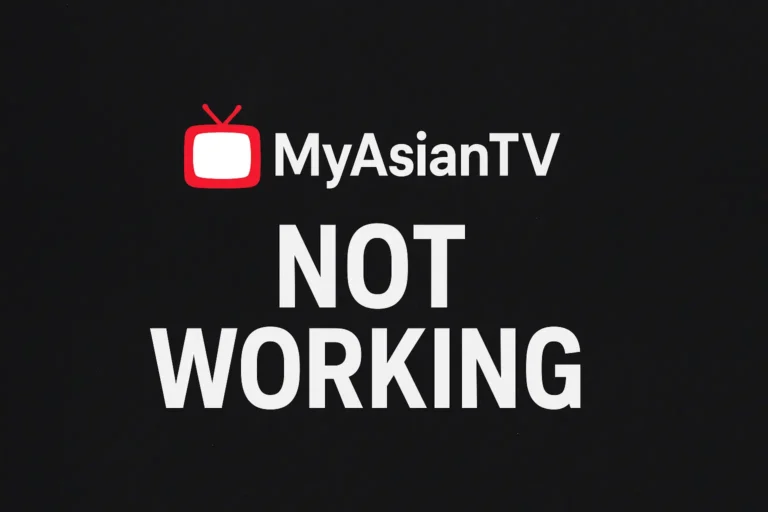
John Teets Net Worth in 2025: How a Visionary CEO Built a $50M Empire and Lasting Legacy
Ever wondered how some CEOs turn companies around and build massive fortunes along the way? John Teets, a name tied to Greyhound and Dial Corporation, is one of those legends. His journey from a small-town kid to a corporate titan is inspiring, but digging into his net worth and legacy reveals even more about what it takes to succeed. You might be curious about how he amassed his wealth or what lessons you can steal for your own career.
In this article, we’ll break down John Teets net worth, his rise to fame, and the strategies that made him a standout leader. You’ll learn about his early life, his game-changing moves at Greyhound, how he built a $50M fortune, and the legacy he left behind. Plus, we’ll share practical tips you can apply today. Let’s dive in!
Early Life: Foundations of a Business Legend
Humble Beginnings in Illinois
John Teets grew up in Rockford, Illinois, in a working-class family. Picture a kid in the 1930s, surrounded by the hum of small-town life, learning the value of hard work early on. His parents instilled a no-nonsense work ethic, which became the bedrock of his success. Unlike today’s tech moguls, Teets didn’t have a fancy startup or a viral app—just grit and determination.
Education at Arizona State University
Teets headed to Arizona State University, where he studied business. ASU wasn’t just a school for him; it was a launchpad. He soaked up lessons on finance and management, but more importantly, he learned how to think big. Imagine a young Teets, scribbling notes in a lecture hall, already dreaming of running a company someday.
Early Career Moves That Shaped His Mindset
After college, Teets didn’t jump straight to the top. He started small, working entry-level roles in the corporate world. These early jobs taught him how businesses operate from the ground up. Think of it like learning to cook before opening a restaurant—you need to know the basics. His knack for spotting opportunities and solving problems set him apart early on.
Climbing the Corporate Ladder at Greyhound
Joining Greyhound in the 1960s
In the 1960s, Teets joined Greyhound Corporation, a company famous for its iconic buses. Back then, Greyhound was a household name, but it wasn’t exactly a goldmine. Teets saw potential where others saw a struggling business. He started in middle management, learning the ins and outs of the company’s operations.
Key Roles Before Becoming CEO
Teets didn’t become CEO overnight. He worked his way up through roles like vice president, overseeing operations and finance. Each step taught him how to manage people, cut costs, and think strategically. It’s like climbing a mountain—one careful step at a time, always keeping the summit in sight.
Challenges Facing Greyhound in the 1970s
By the 1970s, Greyhound was in trouble. Rising fuel costs, competition from airlines, and outdated business models were dragging it down. Teets saw a company stuck in the past, like an old car sputtering on the highway. He knew bold changes were needed to keep Greyhound alive.
Transforming Greyhound into a Diversified Empire
Becoming CEO in 1981
In 1981, John Teets took the helm as CEO of Greyhound. At 48, he was ready to shake things up. His vision? Turn Greyhound from a bus company into a diversified powerhouse. It was a risky move, like betting your savings on a new business idea, but Teets was all in.
Diversification Strategy: From Buses to Consumer Goods
Teets didn’t just want Greyhound to survive—he wanted it to thrive. He pushed the company into new industries, like consumer products and financial services. This wasn’t just about buses anymore; it was about building an empire. His diversification strategy was like planting multiple crops to weather a bad season.
Creation of the Dial Corporation
One of Teets’ biggest wins was spinning off Greyhound’s consumer products division into the Dial Corporation in 1987. Dial, known for soap and household goods, became a standalone success. Teets saw that buses and soap could coexist under one corporate umbrella—a bold move that paid off.
Major Deals: Selling Greyhound Lines, Acquiring Armour
Teets made tough calls, like selling Greyhound Lines (the bus division) to focus on higher-margin businesses. He also acquired Armour, a meatpacking giant, to boost revenue. These deals were like trading a reliable old car for a fleet of sports cars—risky but rewarding.
How John Teets Built His $50M Net Worth
Executive Compensation: Salary, Bonuses, and Stock Options
So, how did John Teets net worth reach an estimated $50 million? As CEO, he earned a hefty salary and bonuses, often tied to Greyhound’s performance. Stock options were the real game-changer, giving him a stake in the company’s success. Think of it like owning a piece of a winning racehorse.
Strategic Investments: Real Estate and Startups
Teets didn’t just rely on his paycheck. He invested in real estate and early-stage companies, especially in Arizona. These moves were like planting seeds that grew into big payouts. His knack for spotting trends helped him build wealth outside the corporate world.
Equity in Greyhound and Dial Corporation
Owning stock in Greyhound and later Dial Corporation was a major wealth driver. When Dial went public, Teets’ shares skyrocketed. It’s like buying a house in a neighborhood before it gets trendy—his timing was spot-on.
Estimated Net Worth at Career Peak and Death
At his career peak in the 1990s, John Teets net worth likely hit $50 million, based on executive pay, stock holdings, and investments. By the time he passed away in 2011, his wealth was still substantial, though some estimates suggest it dipped slightly due to market fluctuations. Exact figures are tough to pin down, but $50M is a solid benchmark.
Navigating Challenges and Controversies
Criticism of Greyhound’s Diversification Strategy
Not everyone loved Teets’ big ideas. Some analysts thought diversifying into consumer goods was a gamble that diluted Greyhound’s brand. It’s like a chef adding sushi to a burger joint’s menu—bold but confusing to some.
Workforce Reductions and Labor Union Backlash
Teets faced heat for cutting jobs to streamline Greyhound. Labor unions pushed back, arguing the layoffs hurt workers. It was a tough call, like a coach benching players to win the game—necessary but unpopular.
How Teets Managed Economic Downturns and Corporate Scandals
The 1980s brought recessions and corporate scandals, like insider trading cases rocking Wall Street. Teets steered Greyhound through these storms by focusing on profitability and transparency. His ability to stay calm under pressure was like a captain navigating a ship through a hurricane.
Philanthropy: Giving Back to Arizona and Beyond
Contributions to Boys & Girls Clubs and Phoenix Suns
Teets wasn’t just about making money—he gave back big time. He supported the Boys & Girls Clubs in Arizona, helping kids access education and sports. He also backed the Phoenix Suns, boosting community pride. Picture him courtside, cheering for the team he helped fund.
Support for Education and Community Development
Teets donated to Arizona schools and community projects, believing education was key to success. His contributions built libraries and scholarships, like laying bricks for future generations.
Balancing Wealth with Social Responsibility
For Teets, wealth wasn’t just for fancy cars or big houses. He saw it as a tool to make a difference. His philanthropy showed that you can be a tough CEO and still have a heart—something we could all learn from.
Comparing John Teets to Other Business Icons
Net Worth and Leadership vs. Lee Iacocca and Jack Welch
How does Teets stack up against legends like Lee Iacocca (Chrysler) or Jack Welch (GE)? His $50M net worth was smaller than Welch’s $750M but comparable to Iacocca’s. Leadership-wise, Teets’ diversification mirrored Welch’s bold strategies, though Iacocca focused more on turnarounds.
Unique Strategies That Set Teets Apart
Teets stood out by blending buses with soap—a combo no one saw coming. Unlike Welch’s data-driven approach, Teets relied on gut instinct and long-term vision. It’s like choosing a scenic route over a highway—riskier but unforgettable.
Influence on Modern Corporate Diversification
Teets’ playbook inspired companies to think beyond their core business. Today’s tech giants, like Amazon moving into cloud computing, owe a nod to leaders like Teets who took big swings.
Lessons from John Teets net worth Career and Wealth Journey
Want to follow in Teets’ footsteps? Here are four lessons from his life:
- Diversify Revenue Streams for Stability: Don’t put all your eggs in one basket. Teets spread Greyhound’s bets across industries, and you can diversify your income too—think side hustles or investments.
- Take Calculated Risks with Long-Term Vision: Teets’ big moves, like creating Dial, were risky but planned. Start small, like investing in a course to boost your skills, and aim high.
- Lead with Ethics and Adaptability: Teets faced controversies but stayed focused on integrity. Be honest in your work, and pivot when challenges hit.
- Use Wealth to Create Positive Impact: Teets gave back to his community. Even small acts, like mentoring a colleague, can make a difference.
Legacy: A Blueprint for Future Leaders
Lasting Impact on Greyhound and Dial Corporation
Teets transformed Greyhound from a struggling bus company into a diversified giant. Dial Corporation still carries his fingerprints, producing everyday products like Dial soap. His vision kept both companies relevant for decades.
Inspiration for Entrepreneurs and Executives
Teets’ story inspires anyone chasing big dreams. He wasn’t born rich or famous—he worked his way up. Whether you’re starting a business or climbing the corporate ladder, his hustle is a reminder that persistence pays off.
Why Teets’ Story Resonates in 2025?
In 2025, with businesses navigating AI, remote work, and global competition, Teets’ ability to adapt and innovate feels more relevant than ever. His legacy is a roadmap for leading through change.
FAQs
What Was John Teets Net Worth at His Peak?
Estimates suggest John Teets’ net worth peaked at around $50 million in the 1990s, driven by his CEO compensation, stock options, and investments.
How Did John Teets Build His Wealth?
Teets built his wealth through executive pay, stock options in Greyhound and Dial Corporation, and smart investments in real estate and startups.
What Companies Did John Teets Lead?
Teets led Greyhound Corporation as CEO and oversaw the creation of the Dial Corporation, managing both through major transformations.
What Controversies Did John Teets Face?
Teets faced criticism for Greyhound’s diversification and job cuts, which sparked labor union backlash. He navigated these by focusing on long-term profitability.
How Did John Teets Contribute to Philanthropy?
Teets supported Arizona’s Boys & Girls Clubs, the Phoenix Suns, and education initiatives, using his wealth to uplift communities.
Conclusion
John Teets net worth of $50 million tells only part of his story. From a small-town kid to a CEO who transformed Greyhound and created Dial Corporation, his journey is packed with lessons. He took risks, gave back, and left a legacy that still inspires in 2025. Whether you’re an entrepreneur or just dreaming big, Teets’ story shows what’s possible with grit and vision.
What’s your takeaway from John Teets’ life? Share your thoughts in the comments, or check out our related articles to keep learning about business legends!





